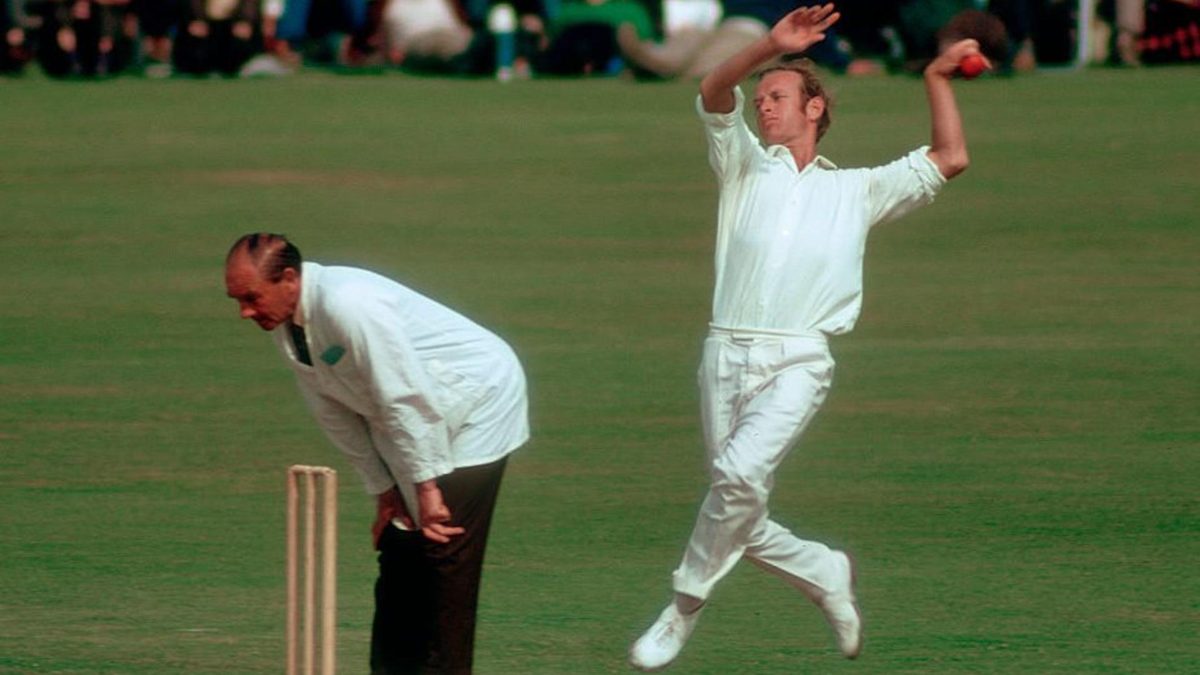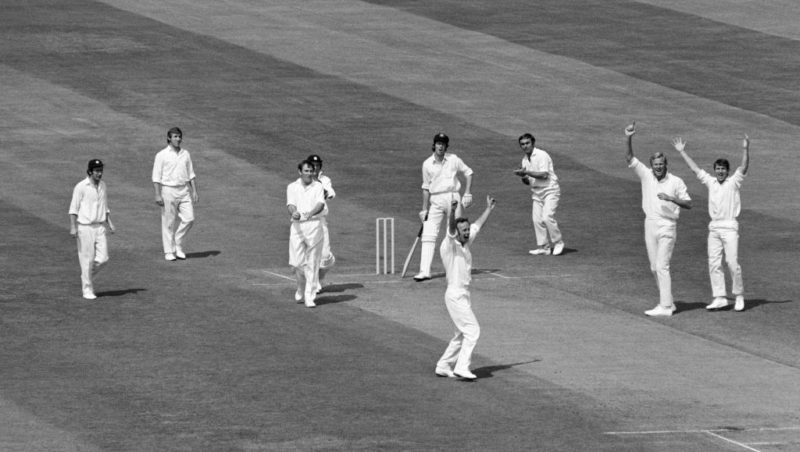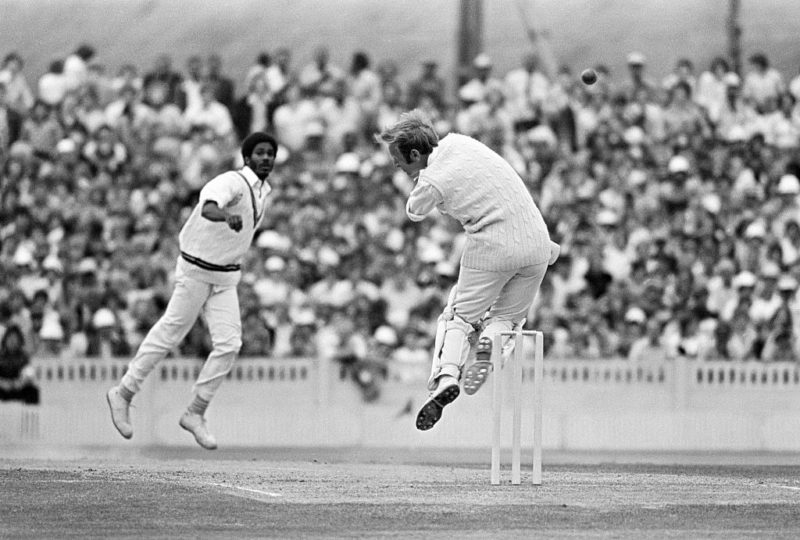
Derek Underwood, born in June 1945, was the definition of a master craftsman. On his retirement after a distinguished career with Kent and England, Doug Ibbotson wrote this tribute in the 1988 Wisden.
The full significance of Derek Underwood’s retirement from first-class cricket will not properly be manifest until four o’clock, or thereabouts, on the last day of a moribund Championship match at Canterbury. Tardyshire, batting as only they can when challenged to score more than 4 runs an over, will be entrenched at 116 -3, many of the Faithful will be departing for Evensong, and seasoned correspondents will have advised their sports editors that the inevitable draw warrants no more than a brief litany.
Doubtless they will be right. Whereas, in the foregoing 25 years, the remarkable Derek Leslie Underwood frequently proved them wrong. For, in his capacity and determination to take, rather than buy, wickets on an unresponsive pitch, Underwood was a rare bird among spin bowlers. Whereas, against the average slow bowler, batsmen were principally alert to the prospect of punishing loose balls, when facing Underwood they steeled themselves against the unexpected – often to discover that, when it came, neither temperament nor technique was adequate. Not the least of their problems was that Underwood was not strictly a slow bowler in the traditional sense.
 “Derek Underwood was not strictly a slow bowler in the traditional sense”
“Derek Underwood was not strictly a slow bowler in the traditional sense”
And so it would come to pass, shortly after the tea interval, with the match on its sick-bed and polite adjectives thin on the ground, that Underwood would peel off his sweater, trudge out his flat-footed run-up and wheel in to bowl. Alas, to elder statesmen deckchair deep in disconsolation, it was not an edifying sight: the approach too long, the delivery too flat. Yet, even as they hrrumphed to the heavens in the name of Alfred Percy Freeman, Underwood’s unique talents were at work. The obdurate batsman pushes forward and is caught off the handle. He takes his leave, a sadder – though little wiser – man, to be replaced by another who, already impregnated with doubt, dithers, dabbles and departs. The encircling vultures resettle and Underwood toils on until, at 6.15 in the final over, the last wicket falls and Kent win by 78 runs: Underwood 6-48.
In this typical scenario lay the real mark of a master bowler; a measure of the professionalism too often overlooked when, in league with a spiteful pitch, Underwood became virtually unplayable. Canterbury, 1984, and during the Championship match against Hampshire, overnight rain crept under the covers and lay brooding on a length. Those who had played and watched cricket only in recent years had never seen Underwood, or anyone else, bowl on a sticky patch. They were in for a salutary 90 minutes. So ruthlessly did Underwood exploit the conditions that, in 11.2 overs, he claimed 7-21 as Hampshire collapsed to summary defeat.
An easy haul? Comparatively speaking, yes. But, in the high summer and autumn of his professional career, such heaven-sent wickets had become a rare luxury. One would guess, in fact, that during a long and illustrious campaign, for each wicket plucked from a helpful pitch, Underwood quarried 50 from solid rock by the sweat of his brow and sheer tenacity of purpose.
 Underwood’s “limited repertoire” did not prevent him recording a first-class century
Underwood’s “limited repertoire” did not prevent him recording a first-class century
Ironically, then, during the burgeoning maturity of his career the game’s administrators, in their questionable wisdom, conspired to ensure that pitches should become as rock-like as possible; that, notwithstanding the odd, mischievous covers, they should remain dry and faithful to a new breed of batsmen who expected – nay demanded – that the ball maintain a line of such predictability that it may be cross-batted, almost with impunity, to all parts.
The declared object of the exercise was both mis-begotten and unsuccessful in that, far from providing maximum entertainment for the public (who were said to be interested only in positive results), it reduced the average Championship fixture to a two-and-a-half day bore between sides incapable of forcing a victory – followed by a limited-overs accommodation neither was prepared to lose. Under such circumstances Underwood’s faculty for confounding the system was even more remarkable.
There was especial irony, therefore, when in his last season pitches were re-opened to the elements. Those among us who rejoiced scanned the sullen skies and smiled in anticipation of a rich Underwood harvest. Where, after all, were the batsmen with the technique to deal with the spinning ball on a steaming pitch? In the event it transpired that the turf technicians had done their work too well. Rain it certainly did, but pitches so rigorously tailored for batsmen produced not the anticipated sticky dog but rather the Plasticine pup on to which the bowler might as well lob a ball of wool. So Underwood was back to the hard graft: 611 overs and 45 wickets at 28.77 runs apiece. No mean performance, but neither an outstanding conclusion to a career during which, in his first season, he took 100 wickets – at eighteen, the youngest player to do so – and repeated the feat nine times.
Such are the bald statistics that all too often dominate the archives of achievement. Certainly they cannot be ignored. Underwood, D. L. – 86 Tests: First, West Indies 1966; Last, Sri Lanka 1981-82. Test wickets, 297; average 25.83. Best performance, against Pakistan at Lord’s in 1974 – 5-20 in the first innings; 8-51 in the second.
Most memorable, perhaps, was his match-winning 7-50 at The Oval to square the 1968 series against Australia. Here was the young Underwood in his element. Torrential rain in the morning flooded the outfield, scores of volunteers joined the groundstaff in mopping up, and so began an agonising race against time that ended with five minutes to spare as the England spinner took his fourth wicket in 27 balls. A splendid statistic but, in perusing the Underwood curriculum vitae, it is equally pertinent to consider his analysis for the first innings of that same match – played on a pitch which yielded 494 runs for England and 324 for Australia. Underwood claimed only two wickets but, in so doing, conceded fewer than 1.7 runs for each of his 54 overs; a degree of economy, not to mention stamina, that seldom deserted him.
Facts and figures produce scope, for those so disposed, to speculate. What had he not forfeited two years of his Test career by defecting to World Series Cricket in 1977? Suppose he had not, in 1981, been banned from the international arena following an unauthorised tour of South Africa? Certainly he might have retired as the most prolific wicket-taker in Test history, which would have meant a great deal to archivists and doubtless something to Underwood himself. But if one respects individuality, honestly pursued, a generous sporting spirit and professional skill, unstintingly applied, then some may consider that many of Underwood’s finest hours were spent in settings some way removed from the Ovals of Kennington or Adelaide.
He will be well remembered, albeit with somewhat grudging affection, at Bournemouth where, amid the sylvan charm of Dean Park, he invariably undid Hampshire. Likewise at Hastings where, in June 1964, he achieved a career-best bowling analysis of 9-28 and, 20 years later, hit his maiden and only century.
Underwood’s batting, like his bowling, though not a thing of beauty was rich in intent. Essentially fundamental in style, it relied on three basic strokes; the dogged forward thrust, the square, hunch-shouldered punch to the off, and the squat, short-arm pull between square leg and mid-wicket. It was a method which served Underwood well enough over the years, not least in scoring an unbeaten 45 against Lawry’s Australians at Leeds in 1968. Even so, it was stretching credibility too far to imagine that, in his 40th year and at best a paid-up member of the nightwatchmen’s union, Underwood could coax, from such a limited repertoire, a first-class century.
Yet he did; nudge by nudge, stab by stab, scrambling between wickets in those Chaplinesque boots. And one suspects that, not until he stumbled into the 90s, was Underwood motivated by anything other than the responsibility of doing a job for his side to the utmost of his ability. Afterwards, of course, it was different. The unconfined delight as he acknowledged the congratulatory toasts of his peers was a joy to behold and to cherish – something that cannot be expressed in a mere statistic. So it was in everything Underwood approached; he took pleasure in his craft but placed craft above all.
Is he replaceable – if indeed there is to be encouragement in a changing game for bowlers of his ilk? Unless the TCCB decrees that, in future, all pitches are to be of rolled steel, the fourth day of a Championship match must offer rewards for even the most modest flipper. Specialists such as Emburey, Hemmings, Marks and Gifford will undoubtedly enjoy a brisk trade. But what happens at the St Lawrence when Somerset sit on the splice? To whom do they turn at The Mote when Middlesex mount a rearguard action? No doubt the chaps in the deckchairs will tell them.








